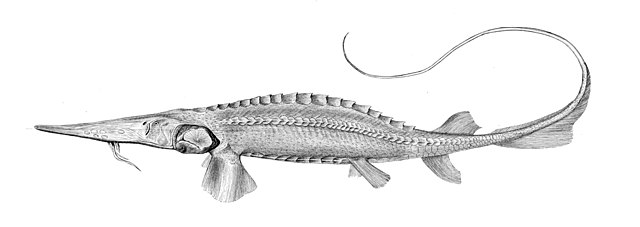The Aral Sea is an endorheic lake lying between Kazakhstan to its north and Uzbekistan to its south which began shrinking in the 1960s and largely dried up by the 2010s. It was in the Aktobe and Kyzylorda regions of Kazakhstan and the Karakalpakstan autonomous region of Uzbekistan. The name roughly translates from Mongolic and Turkic languages to "Sea of Islands", a reference to the large number of islands that once dotted its waters. The Aral Sea drainage basin encompasses Uzbekistan and parts of Afghanistan, Iran, Kazakhstan, Kyrgyzstan, Tajikistan, and Turkmenistan.
The Aral Sea in 1989 (left) and 2014 (right)
The Syr Darya sturgeon (Pseudoscaphirhynchus fedtschenkoi) was a primitive species of fish possibly driven to extinction by the shrinkage of the Aral Sea.
The Ukrainian stickleback (Pungitius platygaster) was the only native species of the Aral Sea to survive its reduction and salinization.
The European flounder (Platichthys flesus) was a saltwater fish introduced to the Aral Sea.
An endorheic lake is a collection of water within an endorheic basin, or sink, with no evident outlet. Endorheic lakes are generally saline as a result of being unable to get rid of solutes left in the lake by evaporation. These lakes can be used as indicators of anthropogenic change, such as irrigation or climate change, in the areas surrounding them. Lakes with subsurface drainage are considered cryptorheic.
Death Valley, Spring 2005: ephemeral Lake Badwater in the flooded Badwater Basin
Example of anthropogenic effects on the Aral Sea
The Great Salt Lake (an endorheic lake) in Utah, taken from the ISS.







